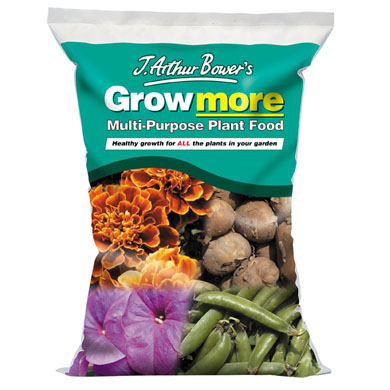Fertilisers, Gardening Advice and Tips
 People, animals and plants rely on a safe, healthy supply of food and nutrients like nitrogen (N), phosphorus (P) and potassium (K) for proper growth and development. Fertiliser is the 'food' that plants need to produce a healthy and bountiful crop. Experts estimate that without commercial Fertilisers, the world would be without one-third of its food supply.
People, animals and plants rely on a safe, healthy supply of food and nutrients like nitrogen (N), phosphorus (P) and potassium (K) for proper growth and development. Fertiliser is the 'food' that plants need to produce a healthy and bountiful crop. Experts estimate that without commercial Fertilisers, the world would be without one-third of its food supply.
Plants require 14 essential nutrients for healthy growth. The absence of any one nutrient in the soil can limit plant growth, even when all other plant nutrients are present in adequate amounts. The three macronutrients that are essential for food production and quality are: nitrogen, phosphorus and potassium
NITROGEN
Nitrogen comes from the air and is the primary building block for all life. The air we breathe is about 78 percent nitrogen, but there are very few plants that can make direct use of nitrogen in the air. To make this nitrogen available to support life, nitrogen from the atmosphere is converted into a form plants can easily use
Nitrogen helps make plants green and plays a major role in boosting crop yields. Nitrogen plays a critical role in protein formation and is a key component of chlorophyll. Plants with adequate nitrogen show healthy vigorous growth, strong root development, dark green foliage, increased seed and fruit formation and higher yields.
PHOSPHORUS
Phosphorus is present in all living cells and is essential to all forms of life. Phosphorus is the second most abundant of all the mineral nutrients contained in our bodies. It can be found in every cell, but nearly 80 percent of phosphorus found in people is concentrated in teeth and bones
Phosphorus is important for root development and increases flowering ability and bloom size. High phosphorus fertiliser should be used when plants are being established in your garden – i.e. planting a new tree, hedge or general garden shrubs for instance.
POTASSIUM
Potassium is the seventh most abundant element in the earth's crust and is found in every cell of plants and animals. Potassium helps plants grow strong stalks, in the same way that calcium gives people strong bones. More than 85 percent of the body's potassium is found in the muscles, skin, blood, digestive tract and liver
Potassium guards the plants against diseases and aids in drought protection and cold tolerance. It also serves a role in improving root development and helps in the process of photosynthesis. Some people may use a high potassium fertiliser at the start of winter and summer to protect plants or crops from temperature extremes or when insects and diseases caused damage to your plants.
There are also a number of other nutrients and filler products in fertiliser mixtures that add to the complete fertiliser products. These fillers help spread the nutrients over an area.
There are some tell-tale signs of deficiencies in plants, for example a plant deficient in nitrogen may start turning green or yellow and purple foliage on an otherwise green plant is a tell-tale sign of phosphorus deficiency
Don’t let the numbers on the packages or tubs intimidate you, just consider what your plants need and match their needs to the numbers. You and your garden will be fine.
Analysis
How much N, P and K are in your bag of fertiliser? The analysis found on each bag or bulk shipment of fertiliser tells consumer the amount of nutrients being supplied.
The three numbers on your bag of fertiliser are referred to as the "analysis." It is the percentage of nitrogen, phosphate and potassium that is available to plants from that bag of fertiliser. In this diagram, this product contains 5 percent nitrogen, 10 percent phosphate and 5 percent potassium.
So what's the other 80 percent of what's in this bag? While brands vary, typically the rest will contain some micronutrients and filler material, which allows for even application of the nutrients across the fertilised area.

